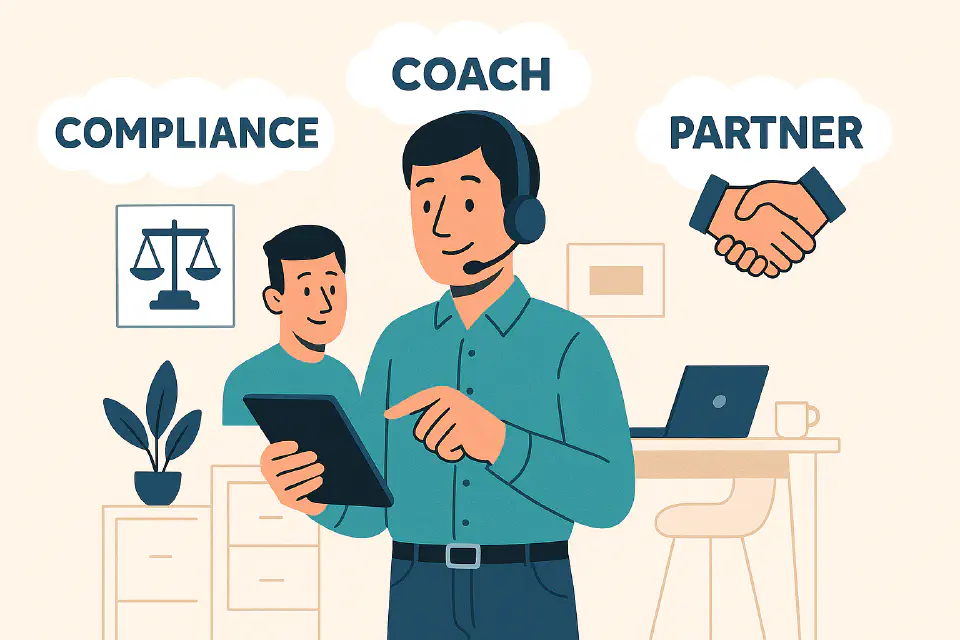
The Roles HR Plays in Organizations
HR isn’t just one job — it’s a complex, evolving system of roles and responsibilities that reach far beyond job descriptions. From strategic advisor to culture builder, HR professionals wear many hats. This page introduces the key dimensions of HR’s impact in modern organizations.
Why Roles & Responsibilities Matter More Than Titles
Most companies define HR through positions: HR Business Partner, Talent Acquisition Lead, Payroll Manager. But in practice, the true impact of HR comes not from the titles people hold — but from the roles they play in shaping the business.
Titles are static. Roles are dynamic. The same HRBP might act as a strategic partner one day and a compliance advisor the next. A recruiter might shape employer branding as much as they manage candidates.
Understanding these roles is critical for:
- Designing effective HR teams
- Aligning expectations between HR and leadership
- Growing HR careers with impact
Two Perspectives on HR’s Structure
Modern HR can be viewed from two complementary angles:
1. HR as a Team of Positions
This includes clearly defined jobs and accountabilities:
- HR Generalist
- HR Business Partner (HRBP)
- Recruiter / Talent Acquisition
- L&D Specialist
- Compensation & Benefits Manager
- DEI Lead
- People Operations
- CHRO / Chief People Officer
Each role has its domain, KPIs, and operational rhythm.
2. HR as a Set of Organizational Roles
These are the broader responsibilities HR assumes within the organization, often crossing boundaries between teams or functions:
- Strategic Partner
- Change Agent
- Culture Architect
- Coach & Enabler
- Compliance Guardian
- Data Translator
These roles are contextual: any HR professional may perform one or more of them depending on the situation and the organization’s needs.
From HR Job Titles to Business-Critical Roles
Let’s say your company is about to launch a new product in a new region. HR’s job titles stay the same — but their roles and responsibilities shift dramatically:
- The HRBP becomes a strategic partner, aligning workforce plans to business goals
- The TA Lead becomes a talent strategist, ensuring speed and quality in hiring
- The L&D team becomes an enablement engine, equipping sales with new capabilities
In this view, HR’s value isn’t about what they’re called — but what they deliver.
Six Key Roles HR Plays in Organizations
Each of the following roles represents a strategic lens through which HR contributes to success. We explore each in its own dedicated page, but here’s an overview:
1. Strategic Partner
- Connects people strategy with business goals
- Participates in executive planning
- Translates strategy into workforce plans
2. Change Agent
- Supports transformation and growth
- Leads cultural or structural shifts
- Builds resilience in teams and leaders
3. Culture Architect
- Shapes values and behaviors
- Supports rituals, recognition, and belonging
- Acts as a steward of trust
4. Coach & Enabler
- Guides managers and employees
- Facilitates feedback and growth
- Advocates psychological safety
5. Compliance Guardian
- Manages legal, ethical, and policy risks
- Oversees contracts, audits, data protection
- Ensures fairness and integrity
6. Data Translator
- Interprets people data for insight
- Builds dashboards and KPIs
- Advises decisions through analytics

Why These Roles Matter
If no one plays the role of Coach & Enabler, leadership development suffers. If no one acts as Culture Architect, values become slogans. If HR isn’t a Strategic Partner, people planning is reactive, not proactive.
Good HR means ensuring all roles are covered, clearly owned, and aligned with strategy.
Designing HR Teams Around Roles & Responsibilities
Instead of only listing tasks in job descriptions, high-performing companies:
- Map strategic HR roles against business priorities
- Assign clear ownership and decision rights
- Enable flexibility so HR can shift roles as needed
This approach:
- Encourages agility
- Prevents gaps in leadership or culture
- Supports growth without chaos
Leadership’s Role in Defining HR
HR doesn’t define its roles in isolation. Executive teams must:
- Clarify expectations from HR
- Invite HR into strategic conversations
- Trust HR to shape organizational effectiveness
The strongest HR functions have top-down sponsorship and bottom-up credibility.

Final Thought: HR as a Dynamic Function
The future of HR isn’t in renaming jobs — it’s in redefining how HR shows up as a leader of people, change, and performance.
By understanding and designing for these multiple roles, organizations can:
- Empower HR to act boldly and proactively
- Elevate people as a true source of competitive advantage
- Create clarity, trust, and strategic alignment across the board
Because when HR plays the right roles well — everyone wins.